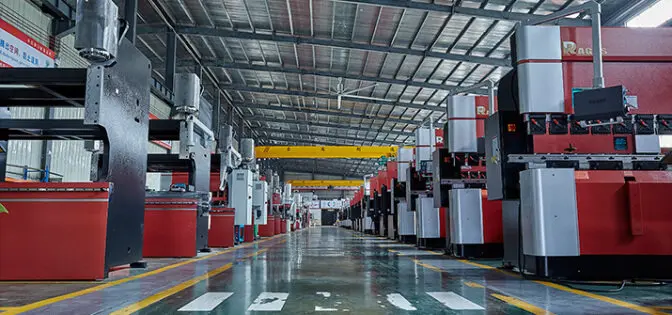The process and principle of electric furnace smelting high carbon ferrochrome
The smelting methods of high carbon ferrochrome include blast furnace method, electric furnace method, plasma furnace method, melt reduction method, etc. Only special pig iron containing about 30% chromium can be produced in the blast furnace; The plasma furnace method and melt reduction method are new processes for smelting high carbon ferrochrome and have not yet been widely adopted. At present, high carbon chromium iron with high chromium content is mostly smelted in a submerged arc furnace using the flux method.
1、 The basic principle of electric furnace smelting
The basic principle of electric furnace smelting high carbon ferrochrome is to reduce chromium and iron oxides in chromium ore with carbon.
From the above reactions, it can be seen that the starting temperature for carbon reduction of chromium oxide to produce Cr3C2 is 1373K, the starting temperature for the reaction to produce Cr7C3 is 1403K, and the starting temperature for the reaction to reduce to produce chromium is 1523K. Therefore, during carbon reduction of chromium ore, chromium carbides are obtained, rather than metallic chromium. Therefore, only high carbon chromium iron with high carbon content can be obtained. Moreover, the carbon content in ferrochrome depends on the reaction temperature. It is easier to generate carbides with high carbon content than carbides with low carbon content. In actual production, during the heating process, some chromium ore reacts with coke to form Cr3C2. As the temperature of the furnace material increases, most of the chromium ore reacts with coke to form Cr7C3. The temperature further increases, and chromium trioxide plays a refining and decarbonization role on the alloy.
The starting temperature of the reduction reaction of iron oxide is lower than that of the reduction reaction of chromium trioxide. Therefore, the iron oxide in the chromium ore is fully reduced at a lower temperature and dissolves with chromium carbide, forming composite carbides and reducing the melting point of the alloy. Meanwhile, due to the mutual dissolution of chromium and iron, the reduction reaction is easier to carry out.
2、 Smelting process operation of high carbon ferrochrome
The production of high carbon ferrochrome using electric furnace flux method adopts a continuous operation method. The raw materials are batched in the order of coke, silica, and chromium ore to facilitate uniform mixing. The open furnace adds the material around the electrode through the feeding groove, and the material surface forms a large cone. The closed furnace directly adds materials into the furnace through the discharge pipe. Whether it is an open furnace or a closed furnace, new materials should be added in a timely manner as the furnace material sinks to maintain a certain level of material height. When the furnace condition is normal, the three-phase current is balanced, the electrodes are stable, the ventilation is good, there is no burning, and the furnace material can sink evenly; The temperature of slag and iron is normal, the composition of alloy and slag is stable, and can be smoothly discharged from the furnace; The furnace pressure of a fully enclosed furnace is stable, and the amount and composition of furnace gas do not change much. There is no explosion in the material tube when the raw materials are dry. The number of iron tapping is determined by the capacity of the electric furnace, and iron and slag are simultaneously discharged from the tapping port. In the later stage of iron production and when slag production is not smooth, round steel should be used to clear the furnace hole to help with slag discharge. Determine the depth of blockage based on the degree of erosion of the furnace lining. Carbon brick lining is blocked with refractory clay balls, while magnesium brick lining is blocked with a certain proportion of magnesium sand powder and refractory clay balls.
The characteristics of abnormal furnace conditions are: 1. When the amount of reducing agent is insufficient, the electrode is inserted deeply, the current fluctuates, the load is insufficient, and the electrode is consumed quickly; The flame at the furnace mouth darkens; The alloy has low silicon and carbon content, hard iron, and many skin bubbles. The content of Cr3C2 in the slag increases, and the viscosity of the slag increases. 2. When there is an excess of reducing agent, the electrode is inserted shallowly, the current fluctuates, sparks, slag sprays, and the electrode consumption is slow; The temperature at the bottom of the furnace is low, making it difficult to open the tapping hole and discharge the slag; The content of carbon and silicon in the alloy increases, while the content of Cr3C2 in the slag decreases. 3. When there is too much silica, the electrode is deeply inserted, the flame becomes dark, the fluidity of the slag is good, the content of Cr3C2 in the slag increases, the solidified slag turns black, the furnace wall is severely corroded, the carbon content in the alloy increases, the superheat of the alloy is small, and it is difficult to discharge from the furnace. 4. When there is too little silica, the electrode is inserted shallowly, the furnace temperature is high, and there is thick slag around the electrode, which is easy to flip. The viscosity of the slag is high, making it difficult to release from the furnace. Due to the high furnace temperature, the temperature of the molten iron is high, the carbon content decreases, and the amount of slag and iron is also small. 5. When the amount of silica and coke is insufficient, the content of Cr3C2 in the slag is low, very viscous, containing many unreduced chromite and small metal particles, which are difficult to flow out of the furnace. The content of silicon and carbon in the alloy decreases. 6. When the amount of coke is insufficient and the amount of silica is excessive, the slag temperature is low, easy to melt and viscous, containing a large amount of silicon dioxide, Cr3C2, and iron oxide. The silicon content in the alloy decreases and the carbon content increases; Insertion depth under the electrode increases consumption. 7. When there is an excess of silica and coke, the slag is easily melted, and some coke with hanging slag is discharged from the tapping hole; The silicon and carbon content in the alloy are both high; Unstable insertion of electrodes. 8. When there is excess coke and insufficient silica, the electrode is lifted up, causing a stinging fire, and coke sprays out from the crucible; The melting point of slag is high, the temperature of slag is also high, the content of Cr3C2 in slag is low, the slag is viscous, and it is not easy to release from the furnace. The chromium content in the alloy depends on the chromium iron ratio in the chromium ore and the recovery rate of chromium. The carbon content in alloys is mainly related to the physical properties of chromium ore. When chromium ore has good melting ability and small block size, the feeding rate is fast, the furnace temperature is low, and the carbon content of the alloy is high; On the contrary, if the ore is difficult to melt, has a large block size, slow feeding speed, and high furnace temperature, due to the refining effect of Cr3C2 on chromium carbides in the block ore, the carbon content of the alloy is low. The silicon content in the alloy is mainly related to the amount of reducing agent used, the silicon dioxide content in the slag, and the furnace temperature. If the amount of reducing agent is high, the furnace temperature is high, and the silicon dioxide content in the slag is relatively high, the silicon content in the alloy is also high; On the contrary, the silicon content in the alloy is low. The silicon content of the alloy fluctuates between 0.1% and 5% during production. About 80% of the sulfur in the alloy comes from coke, so to reduce the sulfur content of the alloy, low sulfur coke must be used. In the smelting process of high carbon ferrochrome, the amount of flux directly affects the composition of the slag. Due to the fact that the composition of slag determines its melting point, which in turn determines the temperature inside the furnace, selecting and controlling the composition of slag is an important issue in smelting ferrochrome. The appropriate composition of slag can reach a sufficient temperature inside the furnace, ensuring the smooth progress of reduction reaction and the smooth discharge of reduction products. The melting point of high carbon ferrochrome is over 1773K. In order to ensure a high reaction rate and facilitate the smooth release of the generated alloy from the furnace and separation of slag and iron, the furnace temperature must be controlled above the melting point of ferrochrome at 1923-1973K. Therefore, the melting point of slag should be controlled within this range. Otherwise, if the melting point of the slag is low and the temperature inside the furnace is also low, although the slag can flow out smoothly during the discharge, the molten iron cannot flow smoothly due to the low superheat, resulting in a phenomenon of more slag and less iron, and in severe cases, only slag but not iron will be discharged; If the melting point of slag is too high and the temperature inside the furnace is also high, the slag cannot flow smoothly due to the high melting point and insufficient superheat. However, if the molten iron can flow smoothly, there will be a phenomenon of less slag and more iron, and in severe cases, only iron will be produced without slag.
After the reduction of Cr3C2 and FeO in chromite, the remaining main oxides are magnesium oxide and aluminum trioxide. Both of these oxides have high melting points and require the addition of a flux (silica) to lower their melting points before they can flow out of the furnace. Therefore, the amount of flux directly affects the composition of the slag. The amount of silica added is determined based on the aluminum magnesium silicon ternary phase diagram. Due to the ratio of magnesium oxide to aluminum trioxide in the slag being around 1, it is possible to draw a line perpendicular to the bottom through the vertex of silicon dioxide. The points on the line represent the melting point of the slag, which decreases with the increase of silicon dioxide content. When the ratio of magnesium oxide to aluminum trioxide changes, it has little effect on the melting point of the slag, because the isomelting line is basically parallel to the bottom line. When checking the ternary phase diagram, the sum of the contents of silicon dioxide, aluminum trioxide, and magnesium oxide in the slag must be converted to 100%. The content of alumina in slag has an impact on the viscosity of the slag. If the content of alumina in slag is too high, the viscosity of the slag will increase, which is not conducive to slag discharge. But aluminum trioxide can increase the resistivity of the slag, which is beneficial for deep electrode insertion, so a certain amount is required.











